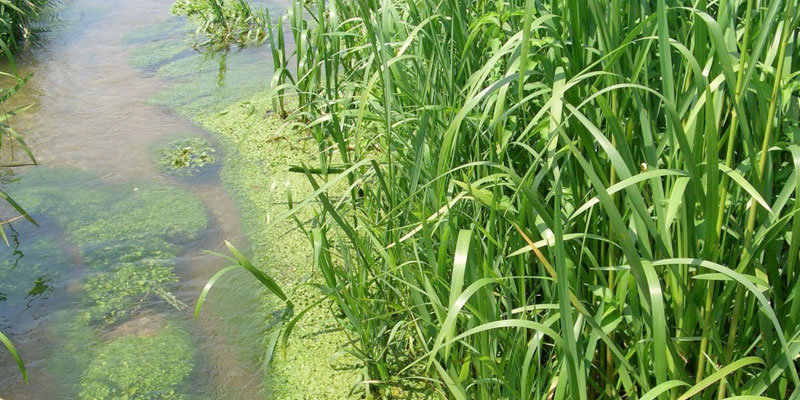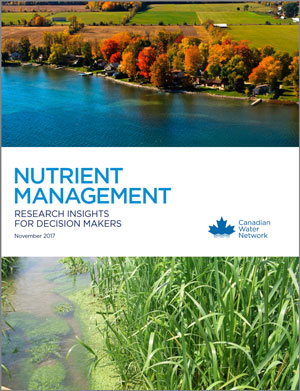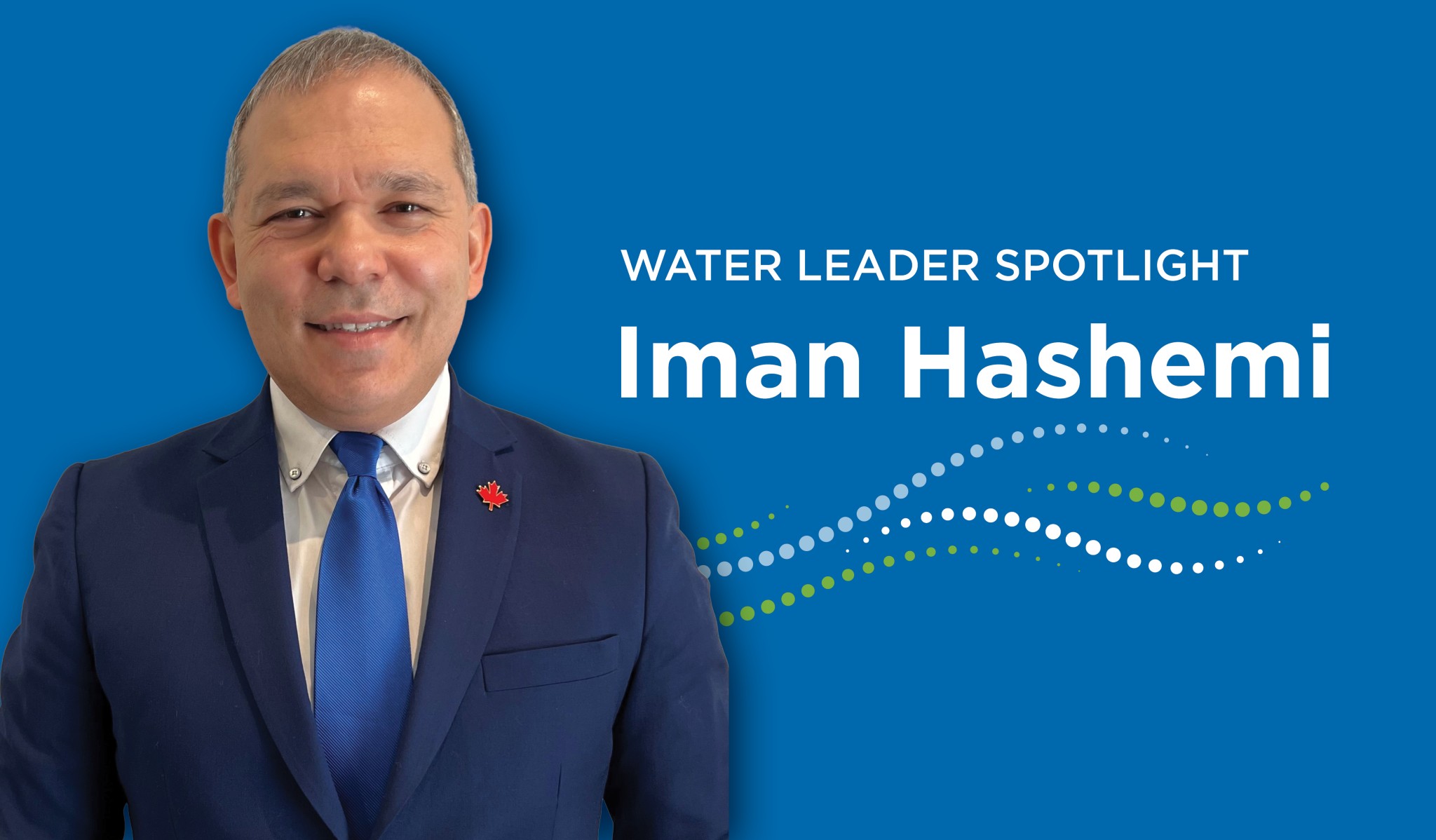Nutrient management and water resources: An updated framing for more effective research access
Canadian Water Network (2016-2017)

Challenge
Harmful algal blooms are a pressing environmental, economic and public health concern in the Great Lakes, Lake Winnipeg, Lac St. Charles, Lake Simcoe and other water bodies across Canada. These blooms are fed by excess nutrients in the water and can impact drinking water treatment, commercial fisheries and tourism. In 2011 and 2014, toxic algal blooms in Lake Erie caused nearly $71 million and $65 million USD in service interruptions, respectively (Bingham, Sinha, & Lupi, 2015).
Government organizations like Environment and Climate Change Canada, Ontario Ministry of Agriculture, Food and Rural Affairs, United States (U.S.) Environmental Protection Agency and the U.S. Department of Agriculture are responsible for setting goals, overseeing implementation and monitoring, and evaluating outcomes of nutrient management. Decisions need to be made, and a clear articulation of the current state-of-the-science, including potential limitations and uncertainties that inform those decisions, is vital to support their work.
The science of nutrient transport and best management practices for nutrients from agriculture or other sources is a mature area of inquiry. However, recent conditions have changed the urgency, emphasis and sometimes even the nature of the questions that decision-makers are asking of the science. Researchers and decision-makers need to reconsider their thinking about how that science is relevant for decisions, particularly in the context of:
- Changing land use and hydraulic conditions
- A growing recognition of the dominance of seasonal and event-based conditions on transport (including storage) and pathways that result in nutrient loading
- An increased focus on negative human health impacts such as harmful algal blooms
Project
In 2016, Canadian Water Network led an initiative to update Canada’s conceptual model of nutrient source and transport. The goal was to provide an effective framing that can be used to approach discussion and inform decisions and investments about nutrient management research and actions. The project considered a number of key questions, including:
- What are the major sources and transport pathways for nutrients and what are their impacts on water quality?
- Where are the significant gaps in scientific understanding? Where is there general alignment or consensus?
- How can an updated framing of what is known and unknown improve nutrient management research and decisions?
Outputs
In March 2016, Canadian Water Network hosted a 2-day workshop in Waterloo, Ontario on the current understanding of nutrient source, fate and transport in freshwater systems. The participants included ten leading Canadian and U.S. experts whose experience encompassed a broad spectrum of research and decision contexts related to nutrient management. The workshop discussion informed the insights presented in CWN’s 2017 whitepaper, Nutrient Management Research Insights for Decision Makers. Key insights that update our understanding of nutrient source and transport include:
- The dominance of extreme weather events and preferential transport pathways on nutrient impacts
- The critical role of nutrient legacies in how systems respond to nutrient management actions; lengthy timeframes (decades or more) that can occur between management actions and ecosystem responses
- The contribution of soluble reactive phosphorus to algal blooms
These findings highlight that effective nutrient management, while improved by increased knowledge, requires an approach that acknowledges the reality of complex, watershed-level considerations and accepts the inevitable uncertainties and unknowns. Site-specific solutions and an adaptive management approach are clearly needed.
Outcomes
The insights developed in this project will directly support those who make decisions about nutrient management actions by structuring options and solutions around an updated framing — allowing them to focus on priorities and better match management actions to nutrient sources of concern. Through ongoing projects and initiatives, Canadian Water Network is building on this work to explore how integrated watershed management, and adaptive management approaches, in particular, can be applied in a way that usefully informs complex watershed-level decisions.













